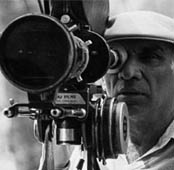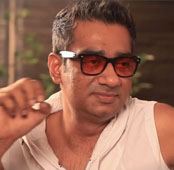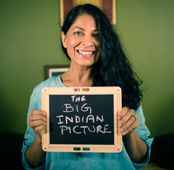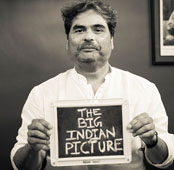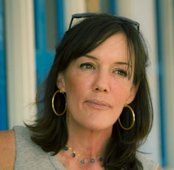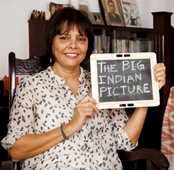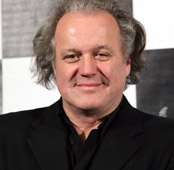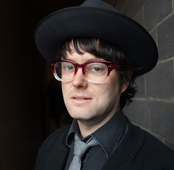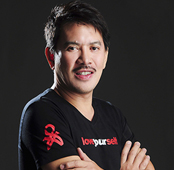-
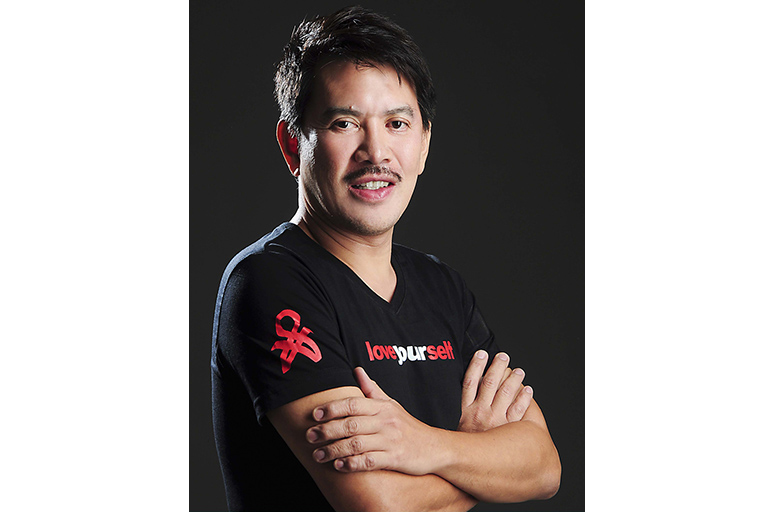 Brillante Mendoza
Brillante Mendoza -
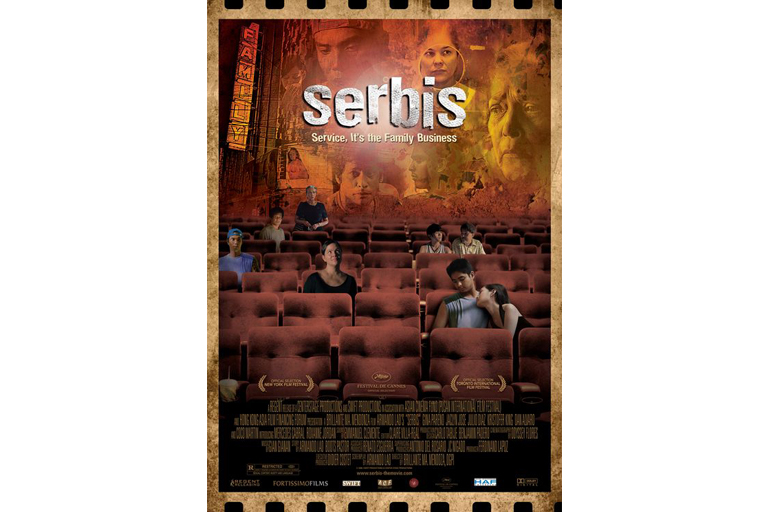 Poster of Serbis
Poster of Serbis -
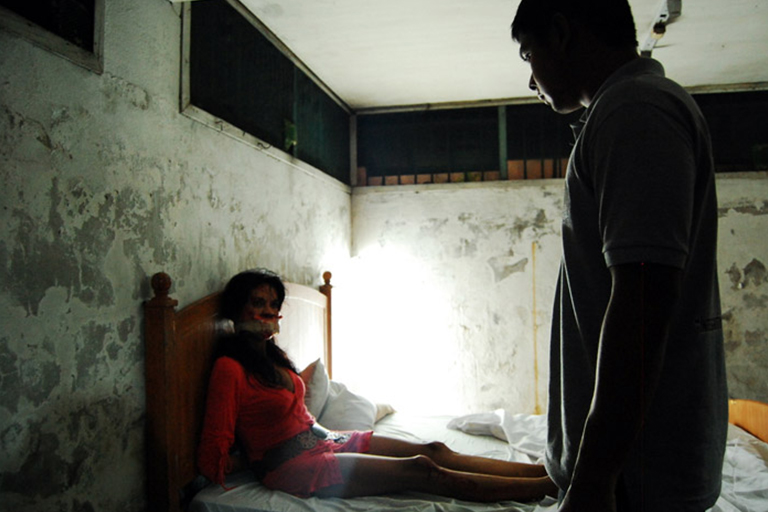 A still from Kinatay
A still from Kinatay
Voices from Afar is a series of interviews with filmmakers and film professionals, critics and experts from various countries around the world. The idea is to, through these voices, better our understanding of films and filmmaking communities which may seem alien at first glance, but whose joys and struggles, on closer examination, may have a deep resonance with our own.
Brillante Mendoza, 53, is one of best known film directors in the Philippines. Beginning his career as a production designer, he directed his first movie Masahista or The Masseur in 2005 and has made 16 films since. His films have brought Filipino cinema considerable international renown. In 2008, Mendoza’s film ‘Serbis’ became the first Filipino film to compete for the Palme d’Or at the Festival de Cannes. In 2009, his film ‘Kinatay’ or ‘Butchered’ won him the Best Director Award at Cannes, placing him in the league of some of the finest directors in the history of cinema. Of his films since, ‘Thy Womb’, was a contender for the Golden Lion at the 2012 Venice Film Festival and ‘Captive’ (2012) was nominated for the Golden Bear at the 62nd Berlin International Film Festival. His latest film is ‘Sapi’, which premiered at the Toronto International Film Festival, 2013. Last year he was awarded Chevalier dans l’Ordre des Arts et Lettres (Knight of the Order of Arts and Letters) by the French Government for an “invaluable contribution to the field of arts”.
Yet Mendoza’s movies, and the accolades they have won, have also greatly polarized the international film community. Film critic Roger Ebert had said of ‘Kinatay’: “Here is a film that forces me to apologize to Vincent Gallo for calling ‘The Brown Bunny’ the worst film in the history of the Cannes Film Festival.” On the other hand, filmmaker Quentin Tarantino, who was also a contender for the award that year, said: “If there is one film I would gladly defend, it is Kinatay… I found it extraordinary.”
We ask Mendoza about the alternative film scenario in the Philippines and how he sees it shaping up in the years to come. ‘Brillante’ literally means ‘brilliant’, in a sparkling, showy way, and Mendoza is supposed to be all of that. Here, however, in Mumbai, where he’s visiting a film festival, he listens to our questions intently, before addressing them in a measured and sincere manner.
You have said that mainstream films in the Philippines, seem to have taken a beating in the last three or four years and independent cinema is seeing an upsurge, especially because of digital filmmaking. Could you elaborate?
What I’m trying to talk about is the awareness of the movie-going public, in terms of alternative cinema. In the past alternative cinema was almost non-existent in the Philippines. Even the films of Lino Brocka (one of the greats of Filipino filmmaking, whose films created a stir at the Cannes Film Festival), earlier in the seventies, would usually border on the melodramatic. He would make some films for the international market, to send to major festivals. But back home, he would usually make the more melodramatic kind of film.
But in the last three or four years, there has been an awareness of alternative cinema. However, while the general Filipino audience is aware about it, they don’t really go out their way to watch this kind of film. So, it’s the same problem, like anywhere in the world. However, a lot of students are beginning to watch this kind of cinema.
We have this awareness because of, maybe, the publicity and the awards I’m getting outside of the Philippines. So people hear my name, and know that I’m doing these kinds of films. But still they don’t really go out their way to see the film.
Yet on my part, I have realized that if we get the money, we’ll do it (make these kinds of films). Filmmakers don’t have to go out of their way to look for an audience. They make their film, and then talk to the producer about whether they can show the film or not.
What I do isn’t really the forte of those who appeal to the Filipino audience; they really patronize Hollywood films because they are not exposed to the kind of cinema I make. We don’t really have access to world cinema, in the Philippines, except on IMDB… and all that. And many people don’t even have the internet. So most don’t have access to alternative cinema or post-commercial cinema. So I don’t think not watching alternative cinema is the fault of the Filipinos.
However, while earlier I didn’t go out of my way to explain alternative cinema to Filipinos—I used to think, ‘That’s not my job, I’m not an educator, I’m a filmmaker’—now I have changed my attitude. I now think that, if the government is not doing anything about it, I’m going to share my work with the people. So I share my experiences and my movies, when I have time. I go to different schools and universities. Sometimes—you’d be surprised—there are teachers, as well as students, who tell me that they don’t even know what the difference between mainstream and alternative is, because they are not exposed. But they would like to share the experience of this kind of film because they know it’s significant. They just know that when they watch the movie on the big screen that it’s different. But they cannot really put their finger on the difference, or why they like it. Even teachers are not able to explain this difference to their students. So I tell this audience about the difference— why we do this kind of film, why we choose the stories we do, and all that.
I’ve been doing this for the past three years already, and I continue to do this. It inspires me. After showing my films at international festivals, when I go back home, I show them to different schools. It’s good that there are private organizations that help me do this. It doesn’t really pay much. But it’s my share of what I can give to my country, my community.
You are known as the fountainhead of alternate cinema in Philippines. You have created a new space. But are there any other new or upcoming filmmakers who can help you take this space forward, make it a movement, so to speak?
Not the new filmmakers. There is, of course, Lav Diaz (a well-known experimental filmmaker from the Philippines). But, while my films are not really that accessible to the Filipinos either, it is more so the case with Lav Diaz’s films, because they are like eight hour to 10 hour long movies. This makes it very difficult for the audience to connect. You have to have the heart of an artist who can share.
Unfortunately, young filmmakers nowadays are more interested with getting placed in film festivals. They are more interested with their ego. It’s a bit frustrating when you see this. Maybe it’s because they are young? I don’t know. It seems they don’t have the right maturity. They make films for themselves a lot. But you have to have something you want to say. And you have to share a film.
But, that said, we have a lot of young, talented filmmakers making films right now. The only thing missing is the right attitude. I think one should have the right attitude towards one’s craft to be able to move on to become a mature filmmaker.
You started off in mainstream Filipino cinema as a production designer, and then your first film (The Masseur) happened almost by accident. Can you take us through that journey?
You are right. In fact, I didn’t really intend to make another film after that first movie. I just wanted to try it. I’d been in the business for quite some time and I knew that it’s really very difficult to become a filmmaker. So I didn’t want to become a filmmaker like the directors I worked with. It seemed very hectic, very stressful, to make a film. So when I did most of the work for my first film, I just did not think about how I would make films in the future. When I make a film, I don’t want stress. I just want to have fun on the set. I just want to make sure that I am all ready, that I’m doing everything I can with what I have— I should be very focused. So that’s what I did. And I didn’t really realize what I was doing until I saw my film on a big screen.
Also, I didn’t like watching it on the big screen. It’s quite different when you are filming or editing— you work so hard that you believe there is something happening in the film, that you are telling the story in the right way. It’s very different when you show your film on a big screen with a lot of people. In this case, there were disappointments that awaited me. Because I showed it to some people from the academia, some friends, as well as some people who were from the business. Most of them, more than 80% of them, didn’t like the way I edited the film or even the story and the acting. So it was really disappointing.
But then I realized that’s how I wanted to do it. At the end of the day, I’m not going to please everyone. So I just do it the way I think I should do it. And, really, I also had some people reacting differently, positively, to the same film, during the same screening.
So the reactions were varied but at the same time they were each, somewhere, valid. And, somewhere, these mixed emotions and reactions made me feel quite relevant. It really got me interested in exploring some more stories in the future. It’s interesting to have this kind of reaction to your work— with some people reacting violently, and others enjoying it, to have a work that would be attacked (laughs), or protected, for a long time after you have created it. So, anyway, that showing of my first film was the turning point in my life, where I realized I should make some more stories.
After The Masseur, you continued to work with the same actors. Why? Couldn’t that be limiting for a filmmaker?
When you do your first film, you don’t care. You don’t care whether people will like it, you just want to do it. But after completing it, the trouble starts. You start to think, become ‘mature’. You start to look for money. There are a lot of complications. So to be able to secure yourself, you surround yourself with friends and people who you think can help you with your insecurities. That’s exactly what I did. My actors and crew—especially my cinematographer—became my friends when we were filming The Masseur and I got comfortable with them. So I have continued to work with them because they are like my security blanket. I am a very insecure person when it comes to making my films. I feel that there is always something wrong with what I do and I need to be assured that somehow what I’m doing is the right thing. So these people I mentioned are sort of my friends, and professionals working with me, at the same time. And they don’t like it (laughs). But that’s why I have kept on working with most of them.
As you mentioned, after your films won a lot of recognition abroad, there has been a boom in experimental cinema in the Philippines, in the last five years or so. Isn’t this a weird paradox— that films from your country have to go to Cannes or to a Venice Film Festival to be valued at home? It’s a paradox Indian alternative cinema experiences as well. As does cinema in the United States— though at least they have their own festivals, such as, say, a Sundance…
Unfortunately, that is the sad reality and it doesn’t happen only in the Philippines or in India. I think it’s happening everywhere, even in Europe. Not only in the developing countries. So I think it’s a common problem of this kind of film circuit. Recognition outside is finally recognition back home. It’s sad.
I must repeat though that, while I’m quite known in my country, and I have respect and recognition from my colleagues and the people, that’s quite different from actually patronizing my films. I showed Captive (2012) back in the Philippines and it was very sad because the box office collections were the same as the box office for Kinatay (2009) or my previous film, both of which were a lot smaller in terms of production budgets. So what’s really the truth is that despite all this recognition, despite all these awards and people recognizing my talent, people don’t really go out of their way to buy the tickets to my movies.
In the Philippines, Tagalog is the predominant language and then you have several other dialects. Are films made in all these dialects?
No. We only create in Tagalog, our main language. Well, in some of my films there are some lines, some characters, who speak in other dialects. I try, from time to time, to insert characters who they speak in their own dialect. So we subtitle those. But it’s basically Tagalog and that’s not really a problem.
There is talk about these bills that will revive independent cinema being considered by the Filipino legislators. Are they likely to be passed? Also, has there been sufficient state support, for you, and Filipino alternative cinema at large? President Arroyo was known to be very supportive of your work. Since 2010, you have had a different president. How have things been with him?
Basically, with state support, I think the best thing that happened with this administration is that they appointed Briccio Santos, a dear friend, as the Chair of an organization called the Film Development Council of the Philippines, which also supports alternative filmmakers. I can’t comment on the President’s own actions, because as a person he doesn’t really prioritize contemporary culture and the arts. But appointing somebody who knows culture and art well— I think that’s the best thing he did.
I have major support from the current government, through this organization, through Santos. In fact, the organization I mentioned is part producer in my next film and it has been helping a lot. It was able to build at least 10 cinematheques all over the country in two years time. And also, finally, from 2011, we have had our own film archive.
Because you are seen as one of the driving forces behind independent cinema in the Philippines, do you feel a responsibility to support this kind of cinema, besides as a director? To produce films by newer filmmakers maybe? How else do you see yourself discharging this responsibility?
I think you can’t really help but be responsible when you are recognized abroad. It becomes a sort of challenge. At one point, I realized I would have to share films, share thoughts about alternative cinema, because nobody else was going to do it.
After Lino Brocka we were gone for almost 20 years from the world cinema scene, and now that we are back again, it would be a shame not to do anything about it.
So I started last year. I call it the Brillante Mendoza Film Foundation and I produce films. It’s not necessary that I make money, but I do it for fun, for the filmmakers. So I have four projects right now and I have this one which is the Brillante Mendoza project, to be able to help other filmmakers who have stories that the mainstream are not interested in, which can be produced. And, I intend to continue to do this. Some stories are out of the box, very unusual. One filmmaker has a script about human trafficking, which is also very relevant and a global issue.
You mentioned that your films have greater budgets now than they did before. Don’t you see that as something risking your independence? Because with a smaller budget you can afford to experiment a lot more, without the pressure of having to recover a lot of money…
Like I said, it’s a continuous struggle. But as a filmmaker you just have to concentrate on what is your priority and which of the two—money or art—are you really interested in. Because if I finally think of just earning money from the film, I might as well do an all out commercial movie.
But I think I’m more interested with the other thing, with doing the right thing first. When I say ‘right’, I mean, to tell the story you want to, to concentrate on that, to make sure that you are sharing what you have with young filmmakers and other people, rather than only telling them how to re-coup the investment.
When you look back to two decades ago, do you ever wonder what happened? Why was the last Filipino film to make it to the Cannes, before yours, so far back? Why did the alternate cinema movement appear to die down after?
Well there have been a lot of experimental films in the last couple of decades. I think the reason alternative cinema was never really given too much attention is also because it was kind of expensive to make films at that time, because they had to be made on 35 mm, even 8 mm film. I remember that at the time we had to process most of the films in Hong Kong, because we didn’t have the ability to process the 8 mm. And 8 mm was cheaper than the 35 mm, so it was what many films were shot on. So part of the reason filmmaking was so expensive was because we had to ship it out of the country.
So, because it was so expensive, the alternative cinema movement never really flourished in the Philippines. We have had Kidlat Tahimik. He is an experimental Filipino filmmaker who has been making films since the last 20 years. And we have had Raymond Red, who won the Palme d’Or (2000) at Cannes for his short film (ANINO). But they were exceptions. Filmmakers now, however, are capable of much more because of the technology. Now you can shoot a film with a cell phone and just a small amount of money. So I must say that this generation is a lot luckier than 20 years ago. Now we also have the access: the computers and the internet to watch other movies from other countries. So I’m happy for this and I hope this generation won’t take this for granted. Because it can also be a problem when everything is already accessible and there. You tend to be lazy, you tend to resort to easy ways out unlike earlier, where filmmakers had to really struggle to make a film, so they put everything in it.
Brillante!
InterviewJanuary 2014
 By Meryl Mary Sebastian
By Meryl Mary Sebastian
Meryl Mary Sebastian is Junior Correspondent at The Big Indian Picture.
 By Rishi Majumder
By Rishi Majumder
Rishi Majumder is Senior Editor at The Big Indian Picture.



